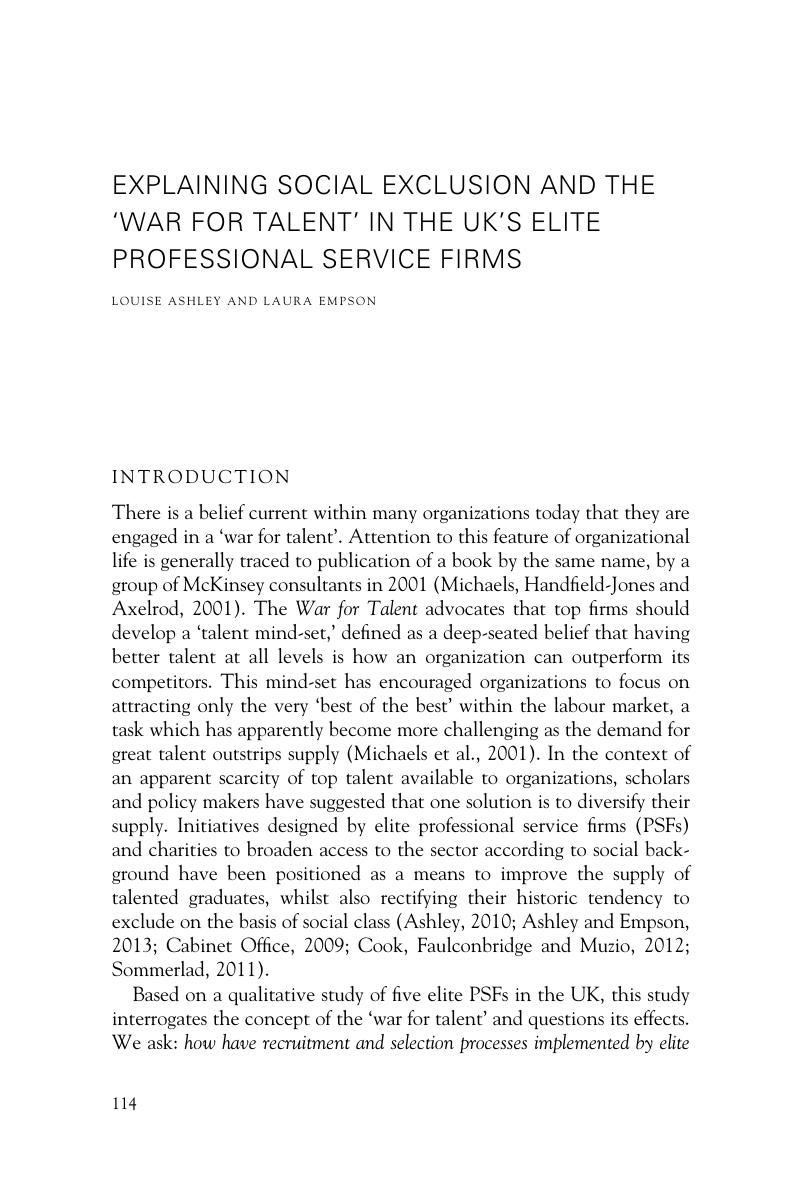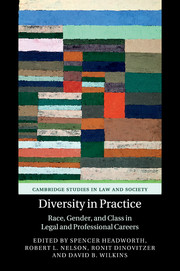Book contents
- Diversity in Practice
- Cambridge Studies in Law and Society
- Diversity in Practice
- Copyright page
- Contents
- Contributors
- Book part
- Introduction
- 1 Rhetoric and realities
- The action after the Call
- Diversity and talent at the top
- Explaining social exclusion and the ‘war for talent’ in the UK’s elite professional service firms
- 2 Entering professional careers
- 3 Inequality and opportunity in the careers of diverse attorneys
- Index
- Books in the series
- References
Explaining social exclusion and the ‘war for talent’ in the UK’s elite professional service firms
from 1 - Rhetoric and realities
Published online by Cambridge University Press: 05 April 2016
- Diversity in Practice
- Cambridge Studies in Law and Society
- Diversity in Practice
- Copyright page
- Contents
- Contributors
- Book part
- Introduction
- 1 Rhetoric and realities
- The action after the Call
- Diversity and talent at the top
- Explaining social exclusion and the ‘war for talent’ in the UK’s elite professional service firms
- 2 Entering professional careers
- 3 Inequality and opportunity in the careers of diverse attorneys
- Index
- Books in the series
- References
Summary

- Type
- Chapter
- Information
- Diversity in PracticeRace, Gender, and Class in Legal and Professional Careers, pp. 114 - 138Publisher: Cambridge University PressPrint publication year: 2016
References
- 5
- Cited by



